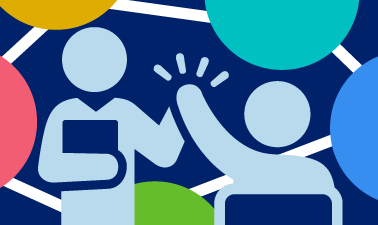The Ripple: Calling on Someone Should Be the Last Thing You Do
The Ripple is a model for structuring student interactions in a way that provides all students an opportunity to respond to a prompt. Picture a ripple in a pond. It starts out as a central dot that ripples out in concentric circles. What if our classroom interactions followed a similar pattern?
The first step of the Ripple instructional approach begins with the initial dot, represented by each student’s individual response in the form of a quick-write or some other visible form of an answer. This first step is the most important step, because it gets all students involved at once. The second step is to have students work in pairs or small groups to share their responses. Finally, the third step, when time allows, is to bring the content from the students’ quick-writes and peer conversations to the whole class.
As you can see, with the Ripple, calling on students becomes the final step in the questioning sequence. At this point, Who can tell me? or Who wants to share? is a perfect way of “rippling out” the topic, since everyone has had a chance to formulate and consider their response.
The Ripple is a simple metaphor that begins with the understanding that calling on someone should literally be the last thing we do. That doesn’t mean teachers can never call on students; it simply means we should save the act of calling on someone until all students have demonstrated their attempts at understanding the target content.
Sounds simple, right? And yet it’s very hard for new teachers—and even veteran teachers like us—to remember to use the Ripple strategy. Why? Because every fiber of our teacher-being wants to go back to the modeling we experienced during the countless hours of classroom instruction we received, first as students of K–12 classrooms and later as college students studying to be teachers. It’s not natural to slow down and take time to ensure students have space to process and deepen their understanding of what they’ve learned. Unfortunately, if we don’t do this, it’s very easy to lose the learners and our own understanding of what they’ve learned.
In short, the Ripple increases student engagement with the content—but it’s a technique that new teachers especially need intentional support and encouragement to execute consistently. When they get that support, they’ll gain insights into the role of formative assessment and how they can be more responsive to learners’ needs.
ACSA Educational Leadership Magazine
September 2024, Volume 82, Number 1
Teaching for Total Participation – Page 36
By: Persida Himmele and William Himmele



